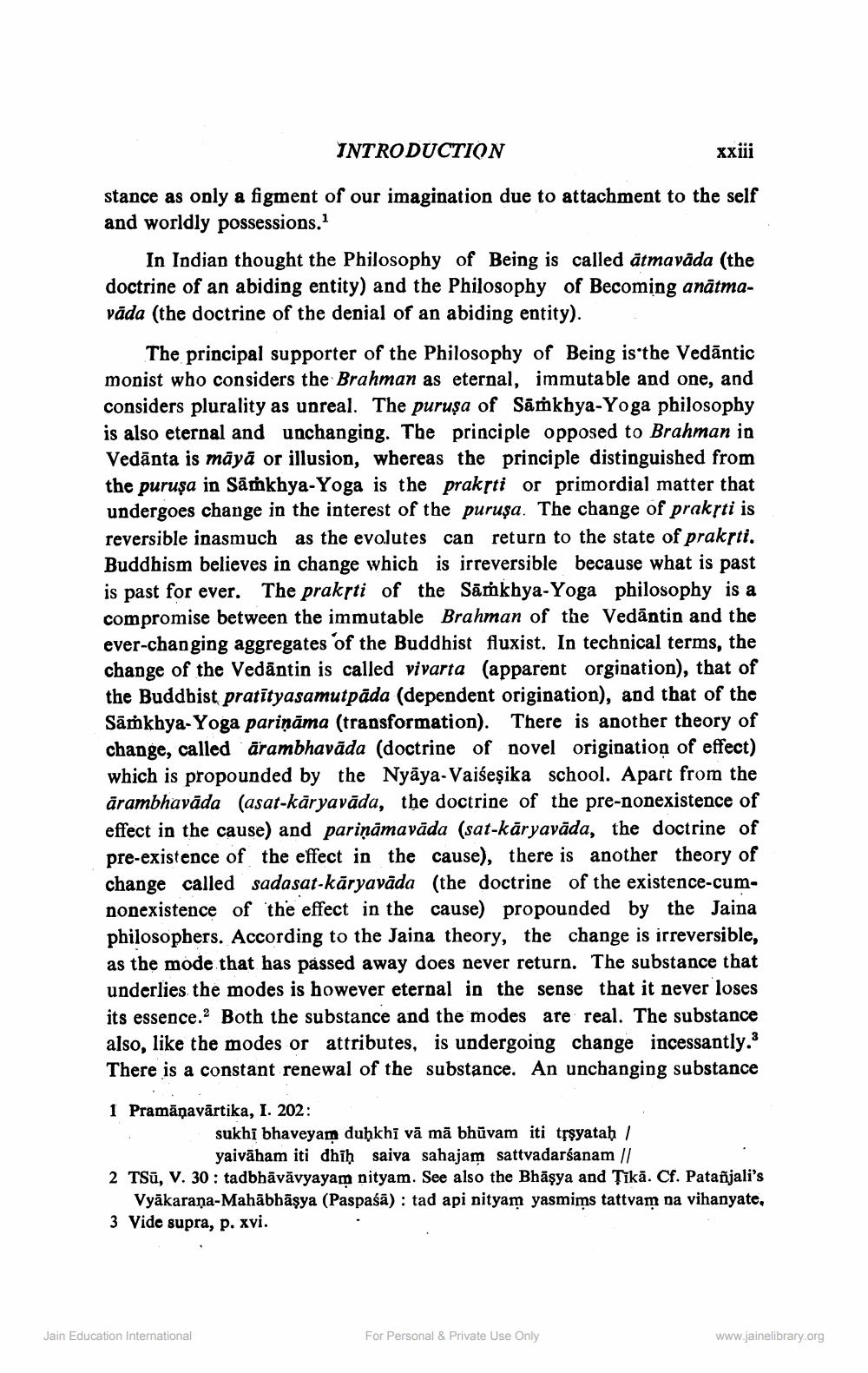________________
INTRODUCTION
xxiii
stance as only a figment of our imagination due to attachment to the self and worldly possessions.1
In Indian thought the Philosophy of Being is called atmavāda (the doctrine of an abiding entity) and the Philosophy of Becoming anātmavāda (the doctrine of the denial of an abiding entity).
The principal supporter of the Philosophy of Being is the Vedantic monist who considers the Brahman as eternal, immutable and one, and considers plurality as unreal. The puruşa of Saṁkhya-Yoga philosophy is also eternal and unchanging. The principle opposed to Brahman in Vedanta is māyā or illusion, whereas the principle distinguished from the puruşa in Samkhya-Yoga is the prakṛti or primordial matter that undergoes change in the interest of the puruşa. The change of prakrti is reversible inasmuch as the evolutes can return to the state of prakṛti. Buddhism believes in change which is irreversible because what is past is past for ever. The prakrti of the Samkhya-Yoga philosophy is a compromise between the immutable Brahman of the Vedantin and the ever-changing aggregates of the Buddhist fluxist. In technical terms, the change of the Vedantin is called vivarta (apparent orgination), that of the Buddhist pratītyasamutpāda (dependent origination), and that of the Samkhya-Yoga pariņāma (transformation). There is another theory of change, called ärambhavāda (doctrine of novel origination of effect) which is propounded by the Nyaya-Vaiśeşika school. Apart from the ārambhavada (asat-karyavāda, the doctrine of the pre-nonexistence of effect in the cause) and parināmavāda (sat-karyavāda, the doctrine of pre-existence of the effect in the cause), there is another theory of change called sadasat-karyavāda (the doctrine of the existence-cumnonexistence of the effect in the cause) propounded by the Jaina philosophers. According to the Jaina theory, the change is irreversible, as the mode that has passed away does never return. The substance that underlies the modes is however eternal in the sense that it never loses its essence.2 Both the substance and the modes are real. The substance also, like the modes or attributes, is undergoing change incessantly.3 There is a constant renewal of the substance. An unchanging substance
1 Pramāṇavārtika, I. 202:
sukhi bhaveyam duḥkhī vā mā bhūvam iti tṛṣyataḥ / yaivaham iti dhiḥ saiva sahajam sattvadarśanam //
2 TSū, V. 30: tadbhāvāvyayam nityam. See also the Bhāṣya and Ţikā. Cf. Patanjali's Vyakaraṇa-Mahābhāṣya (Paspaśā): tad api nityam yasmims tattvam na vihanyate, 3 Vide supra, p. xvi.
Jain Education International
For Personal & Private Use Only
www.jainelibrary.org




